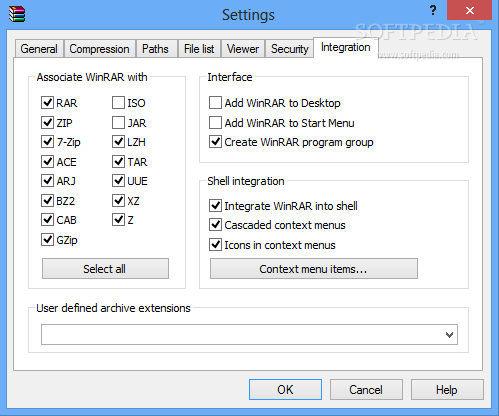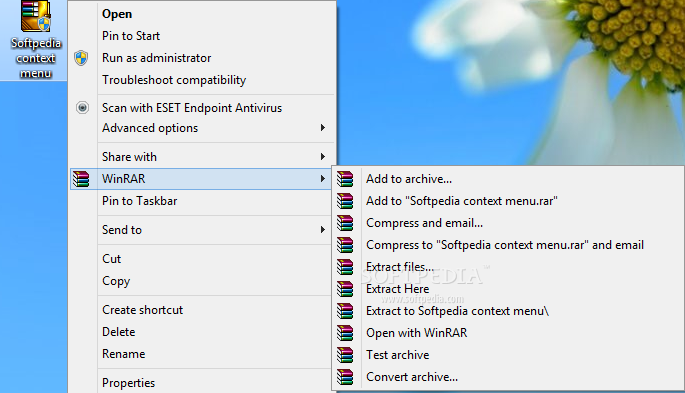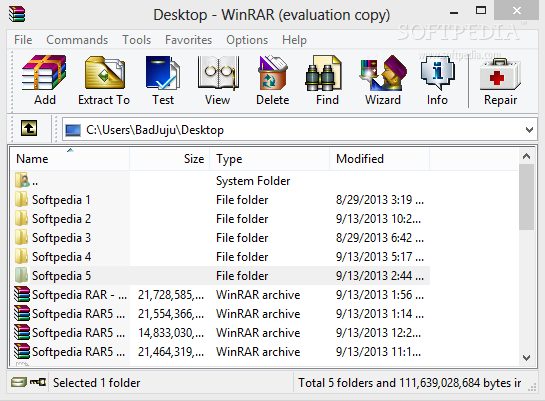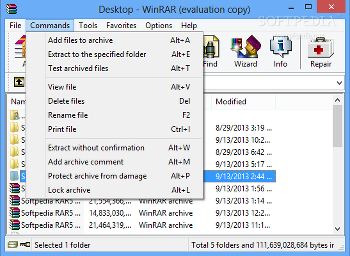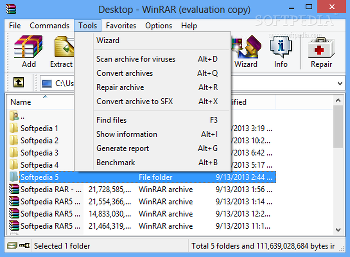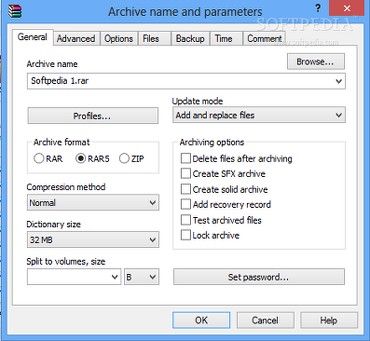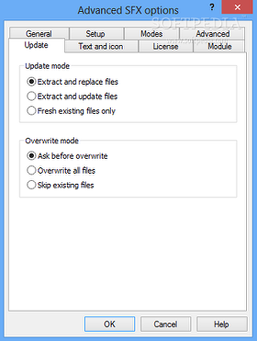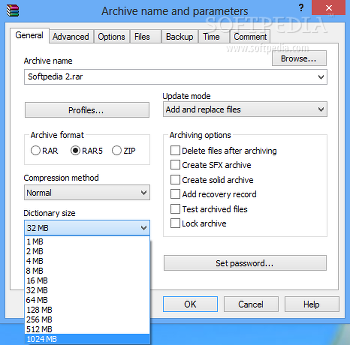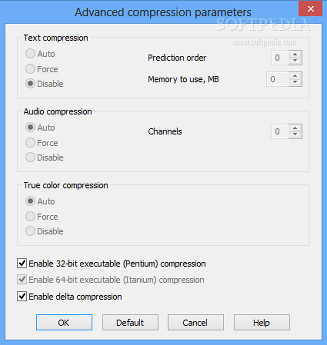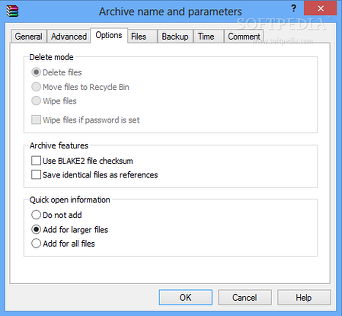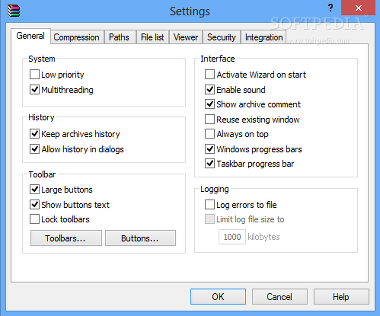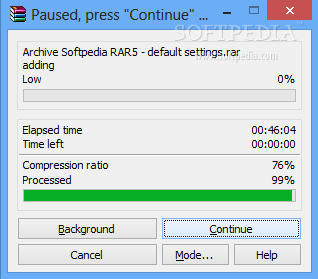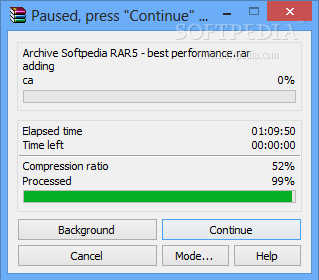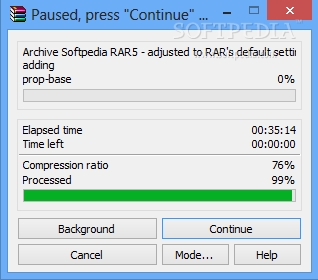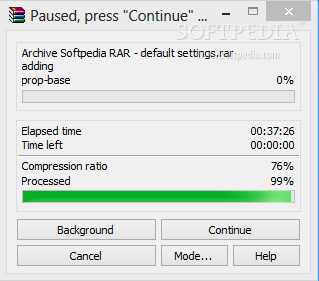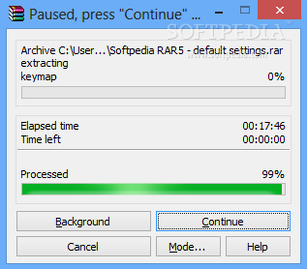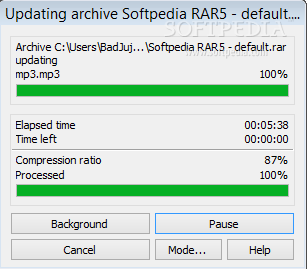Considered one of the giants of compression utilities thanks to its immense array of options, WinRAR has recently released its fifth version, after a several-month-long beta stage.
The most important addition is the introduction of RAR5, a new format that promises better compression and decompression speed, as well as a more secure encryption algorithm. Whether it will become users’ format of choice or not remains to be seen.
At the moment, RAR remains the default setting for compression tasks, as WinRAR takes into account compatibility issues most likely to occur when sending archives to other users – older WinRAR versions do not support RAR5.
Installation and interface
The first noticeable feature can be observed in the installer itself: WinRAR now offers extraction support for XZ archives, aside from the previously supported RAR, ZIP, 7-ZIP, ACE, ARJ, BZ2, CAB, GZip, ISO, JAR, LZH, TAR, UUE, and Z.
The utility can be integrated into the Explorer context menu and allows users to customize menu entries in order to quickly compress, extract, test, or repair archives without launching the interface; no changes have been made in this matter.
As far as the interface is concerned, the application remains loyal to the modest appearance that its longtime users have already grown fond of. The GUI is intuitive enough for novices to quickly figure out, with navigation options that are well-organized into the menu bar and right-click menu.
Notable options
Among WinRAR’s important features we can mention archive locking (cannot be modified by WinRAR), tests, repairs, comments, protection from damage, password protection, and benchmarking, along with a search function, virus scanning tool, self-extracting option, and wizard for creating, unpacking, or adding files to existing archives.
Creating self-extracting archives (SFX) enables users to extract files and folders without using specialized tools, even if they do not have WinRAR installed. You can schedule a program to run before or after extraction, specify files to delete in the destination folder, as well as select the update mode (extract and replace, extract and update, or fresh existing files only).
Solid compression is recommended when processing a large number of small files or files with the same format, in order to achieve better compression ratio. Password protection can be accompanied by file name encryption to maximize security, while WinRAR lets you organize a list of frequently used passwords.
New features
WinRAR’s dictionary size is used for compressing repeated patterns in processing information. The larger it is, the smaller the output archive will be, but task duration is extended and higher system resources are used.
64-bit RAR5's dictionary size can be increased to 1GB, while 256MB is the maximum value for 32-bit. It is most effective when compressing large files, such as system backups and collections of music, movies, and photographs. However, both 32-bit and 64-bit variants are capable of extracting archive content of any dictionary size, including 1GB.
Specialized text, audio, true color, and 64-bit executable (Itanium) compression parameters are not available in RAR5, since they rated low in performance compared to general compression. These options are still available for classic RAR, though.
WinRAR 5.0 introduces the BLAKE2 high-security cryptographic hash function, which comes in handy for identifying duplicate file contents. It is just as fast as MD5 on 64-bit platforms, but only available for RAR5. If the BLAKE2 signature is not used when compressing RAR5, the CRC32 checksum will be created instead.
Speeding up RAR5 decompression is done by utilizing multiple CPU cores. It is recommended to do so when using BLAKE2 signatures or when dealing with large file sizes. Furthermore, RAR5 supports the AES-256 encryption algorithm, and can save NTFS symbolic and hard links.
While the recovery mode for RAR5 equals the previous format in power when it comes to repairing contiguous damage, it offers better results at fixing archives corrupted in multiple segments. Plus, it allows the recovery record to be as large as the archive itself.
Compressing files with recovery volumes or extracting data from these sets is faster than in the previous RAR format. Recovery volume sets also store checksums of protected RAR files now. The "Repair" command can use a partially corrupt recovery record data (even if it failed the validity test) in order to recreate the archive structure and gain access to undamaged files.
Continuing the list of new features, file comments and authenticity verification have been removed in both RAR5 and classic RAR (since they proved to be unreliable), file names and archive comments now use UTF-8 encoding, while the file path length in RAR and ZIP archives can store up to 2048 characters.
Testing RAR5 and comparing it to old RAR
We submitted a 26.3GB folder for compression in order to evaluate the new format's abilities. The testing machine was an Intel Core i5-2400 CPU and 8GB RAM on Windows 8 Pro 64-bit, on a 500GB Seagate Barracuda SATA-III HDD with 16MB of cache (ST500DM002-1BD142).
Using RAR5’s default settings (normal compression method, 32MB dictionary size, multi-threading enabled), WinRAR compressed the folder in 46 minutes and 4 seconds, outputting a 19.9GB archive. For best performance results we applied the best compression method and 1GB dictionary size, with multi-threading enabled. Although WinRAR took a longer time to carry out the task (1 hour, 9 minutes, and 50 seconds), it reduced the RAR5 archive size to a staggering 13.8GB, which is almost 50% of the original folder.
For the second part of the test, we wanted to compare strengths and weaknesses between RAR5 and its predecessor. The same 26.3GB folder was used in both compression jobs, and we adjusted RAR5 to RAR's default settings: normal compression method, 4MB dictionary size and multi-threading enabled. In addition, the text, audio, true color, and 64-bit executable (Itanium) compression methods were disabled in old RAR.
As for results, the RAR5 operation was done in 35 minutes and 14 seconds (producing a 20GB archive), while classic RAR crossed the finish line in 37 minutes and 26 seconds, creating a 20.2GB file. Differences between the two versions are barely noticeable, so we can safely say the new RAR5 should be used at full capacity when handling large files for best results.
Extracting all files and folders from a 19.9GB RAR5 archive was performed in 17 minutes and 46 seconds. Adding and replacing two files in a 3.57GB archive with the same format took WinRAR 5 minutes and 38 seconds to finish.
RAR5 tests were repeated on a 240GB Kingston HyperX 3K SATA-III SSD, applying the default settings previously used in RAR5 on the same 26.3GB folder. Archive compression took 37 minutes and 20 seconds (19% less than the HDD). File and folder extraction was done in 4 minutes and 52 seconds (an impressive 73% reduction).
Unsurprisingly, in all these tests, WinRAR hogged system resources and considerably slowed down computer responsiveness (especially with RAR5 at best compression mode).
The Good
Since our previous review, WinRAR has brought to the table a brand new format that supplies users with bigger and better compression and security options, while eliminating or replacing old features (for example, time standard for file names is modified from local time to UTC, making it easier for users to exchange files across different time zones).
The command-line utility includes new parameters and excludes old ones as well (e.g. the -md switch syntax supports larger dictionary sizes, “cf” command for excluding the base folder from names is removed).
WinRAR supports both 32-bit and 64-bit architectures and all major operating systems, including Windows 8.1 (although it was not officially announced by the developer, we have tested it and WinRAR smoothly integrates into the latest OS). The app offers multilingual support and includes help documentation for common users and professionals.
The Bad
The interface has not been updated for a long time, and it could use a facelift.
The Truth
WinRAR impresses with its latest release, as the new RAR5 proves to be a must-have archive format in the arsenal of any serious user, backed up by premium encryption methods. In order to prevent compatibility issues when sharing archives, you may continue using classic RAR until its successor is widely distributed, or use SFX archives instead.
 14 DAY TRIAL //
14 DAY TRIAL // 